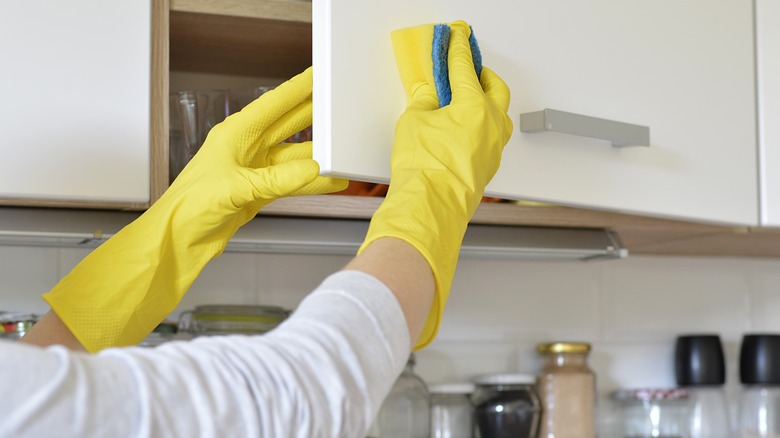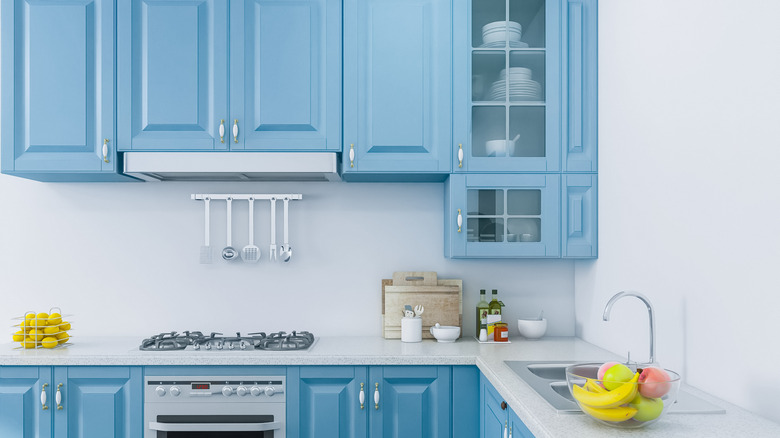How To Clean That Nasty Grease Off Of Kitchen Cabinets
If it's been a while since you looked at your kitchen cabinets (rather than just what's inside them), you might notice they have become the victims of food splatter. Grease and juices can pop up while cooking on the stovetop, and leave unfortunate marks. If you have darker-colored cabinets, these marks can blend in, so it can be easy to overlook how messy they get, with cabinets becoming one of the things in your kitchen you never clean. Luckily, there are many ways to remove grease stains, and it's never too late to start scrubbing.
Besides water, just one other ingredient is needed to rid your cabinet of grease spots — and it might already be in your kitchen. Instead of purchasing an expensive cleaner, you can make your own effective solution mixing half water and half vinegar. Though it may take several swipes to effectively remove stains, a little bit of elbow grease will surely help.
Another option, especially if you don't like the smell of vinegar, is mixing water with some good dish soap. To remove super tough grease, scrub each cabinet for two minutes using a sponge. Afterwards, you'll likely feel instant satisfaction with your newly cleaned cabinets — until it's time to repeat the process.
How often should you clean cabinets?
The best way to prevent future grease buildup on your cabinets is by scrubbing them on a regular basis. Though you don't necessarily have to deep clean constantly, you should at least be wiping them off weekly with diluted vinegar or a cleaner of your choice. Then, every three to five months, experts recommend emptying out your cabinet and scrubbing the interior, too. This is also a good time to throw out any expired goods.
If they're dusty, the most effective way to remove tiny particles is by using a microfiber cloth (though a paper towel works too). Additionally, a small scrub brush, such as a toothbrush, is great for cleaning hard-to-reach places. It's also important to clean the top of your cabinet to reduce allergens. To make this process easier, you can cover them with parchment paper that can be easily removed and tossed away. After cleaning, dry your cabinet, especially the inside, to prevent mold formation.

